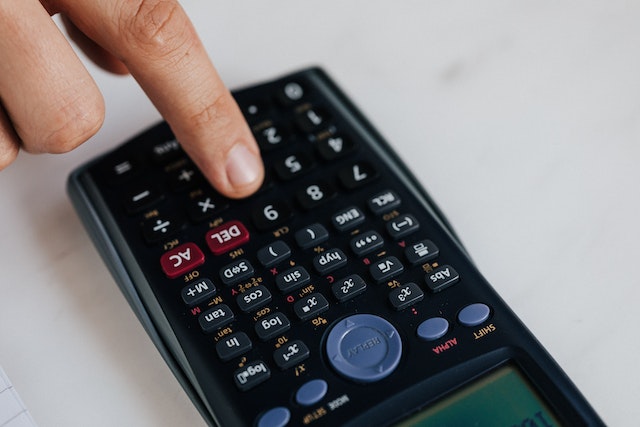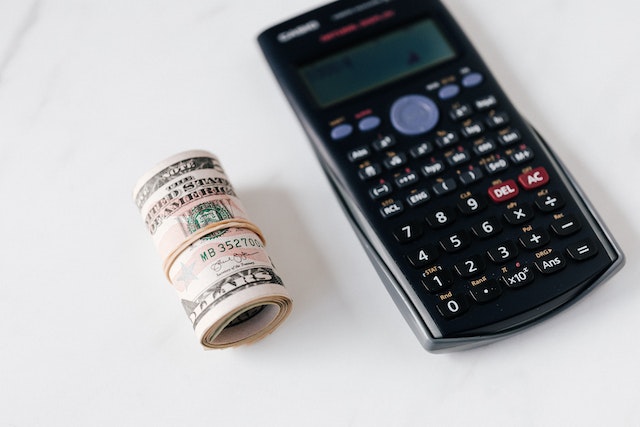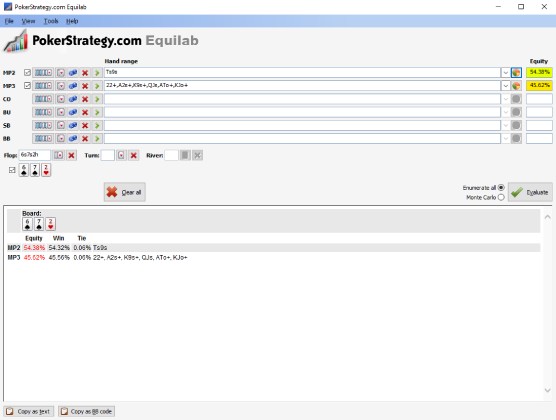Poker odds and counting the equity needed to call are the basics of the game that every aspiring poker player should master. But fear not, the math is almost as simple as poker rules, and once you get a grasp of it, you’ll feel way more comfortable at every poker table.
Chances are you’ve already mastered the topic. Even so, a little repetition won’t do any harm, don’t you think? However, if you’re pretty new to the fascinating world of poker, you’ve came to the right place, as this article will help you improve your poker game tremendously.

What are the poker odds?
Poker odds (or pot odds, as many players prefer) reflect the ratio between the chips already in the pot and the bet you are facing. In this scenario, we assume that the pot amount includes the opponent’s bet and the chips from previous betting rounds.
For example, there is $50 in the pot on the river, and your opponent bets another $25. In that case, the odds are calculated in the following way:
[50 (size of the pot) + 25 (size of the bet you are facing) ] : 25 (size of the bet you are facing) = 3:1
Usually, poker odds are written with a colon sign (:) and are referred to as “x to one”. In our example, that would be “three to one”.
This is what you need them for
The poker odds are a way to assess whether you can call your opponent’s bet profitably or not. How do you figure that out?
Let’s start by determining how often, statistically speaking, your particular hand needs to be better than those of your opponents at the present pot size.
To calculate the exact percentage, you must find out how big the pot would be if you call. In our example, that would be:
$50 (pot before any bets at the current round of betting) + $25 (your opponent’s bet) + $25 (the amount you call). These numbers sum up to $100 which would be the total pot after your opponent’s bet and your call.
Next thing is to divide the size of the call by the total size of the pot. In our case that would be $25 ÷ $100 = 0.25
The last thing to do is to multiply the result by 100% to get the percentage we are looking for, and in our case, that would be 0,25 × 100% = 25%.

The ability to calculate odds is crucial to your poker game
Knowing how often your hand has to win against a range of hands your opponent could have is a vital skill. In our example, you must on average win more than 25% of the time for the call to be profitable.
Let’s say it was a single raised pot at a $2/5 cash game in Las Vegas (side note – if you are planning on playing live poker, read these few tips first). You defended AT against an open from a loose player in the middle position. You’ve called the c-bet on A22, the 3 turn was checked through, and the river was 6. Now that the pot is $50, you check once again and face a $25 bet. As we’ve already established, you need your AT to be good more than 25% of the time for a call to be profitable.Without getting too much into complex poker strategy, it’s safe to assume that would be an easy call against almost any opponent. You need to be correct only 25% of the time, and you have a really good hand, which beats your opponent’s bluff and even some value bets. It’s important to consider the expected value of your plays, you can learn about it in this article.
Pot odds are especially helpful when you have drawing hands
Let’s look at another example. You’ve defended your T9 in spades against a 5 BB open from the middle position, and your opponent is a tight, old gentleman. The game is once again $2/5, the pot is $50, and you both see 672 with your flush draw.
Your assumptions about your opponent are:
- he raises big preflop with very good hands (pocket pairs and QJs or better),
- he likes to c-bet a lot,
- he does not continue aggression on turns which does not improve his hand.
Returning to the action: you check, and your opponent bets $20. How do you figure out whether you should or shouldn’t call?
Let’s start with the odds you are getting = 50 + 20 : 20 which can be simplified to 7 : 2 or 3.5 : 1.
How much equity do you need to call then?
$50 (pot) + $20 (opponent’s bet) + $20 (your call) = $90 (total pot)
$20 (your call) ÷ $90 (total pot) = 0.22
0.22 × 100% = 22%
How do you evaluate whether you have enough equity?
Let’s count the cards that should make you a winning hand – you have 9 outs to the flush, 4 outs to the gutshot, and 6 outs to hit the top pair.
You will hit one of your flush outs ~19% of the time (9 cards out of 47 left in the deck* = 9 ÷ 47 = 18%).
You will hit the straight on any 8, which gives you three more outs (the spade one is already a flush out), which adds another ~6%.
Lastly, you have six outs to the top pair, which may not always be the best hand but will win at showdown sometimes and, more often than not, let you call another bet on the turn. These six more outs translate to another ~13%.
The chance of hitting one of your outs on the turn is roughly 38%, which is way higher than the 22% you need to make the call.
Obviously, this is a simplified example, and there are more nuances to studying such hands (your flush outs may be dead but at the same time your opponent may be very easy to bluff later on). Still, with such a great overlay of your hand equity versus the equity required to call, you can’t really go wrong with calling.
* there will be most likely fewer cards in the deck, but when counting outs, we always count all the cards that we have not seen during the hand, so in this case, 47 = 52 (cards in the deck) – 2 (our cards) – 3 (cards on the flop).

Calculating poker odds get way easier with time
After all, many situations are similar. Sooner or later, you’ll know your odds and how much equity you need to call in most spots without much counting. If you master the basics of these calculations, you’ll be able to study poker hands against better opponents who balance their plays and are hard to play against.
Over the last few years, many easy-to-use poker tools have been developed, from poker odds calculators to advanced game-theory-optimal solvers. After learning the basics, the time will come for you to use them to your advantage. But that’s a topic for another article!
Want to hone your poker strategy quickly?
Join the Smart Spin team! Over the years, we’ve developed a complete training offer that will make you a great Spin & Go player and a better poker player overall. We’ve coached hundreds of people who won millions of dollars, and we’ve created a community of players like no other poker school.
Don’t take our word for it. See it for yourself — you’ll have a month for free to find out whether our offer fits you or not!
